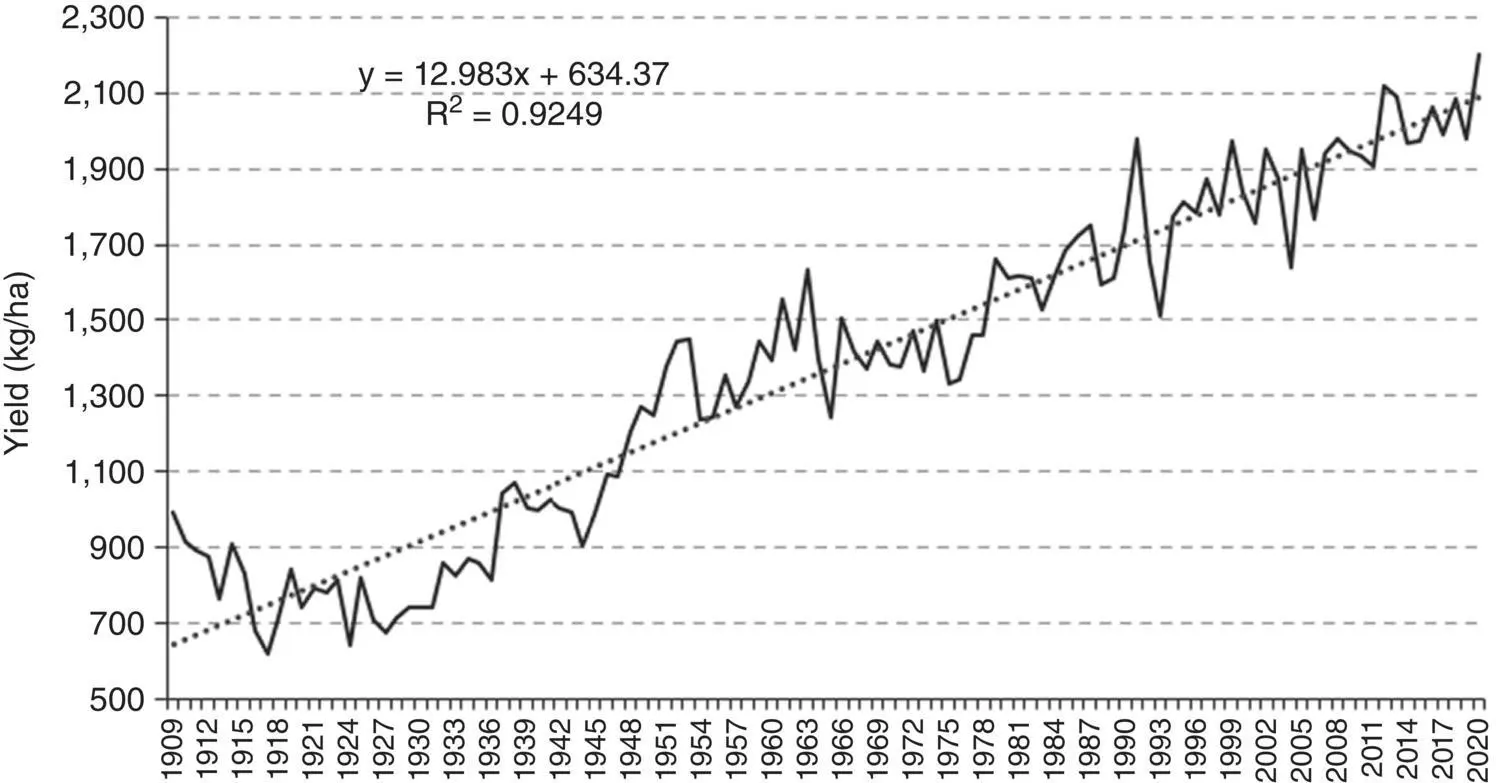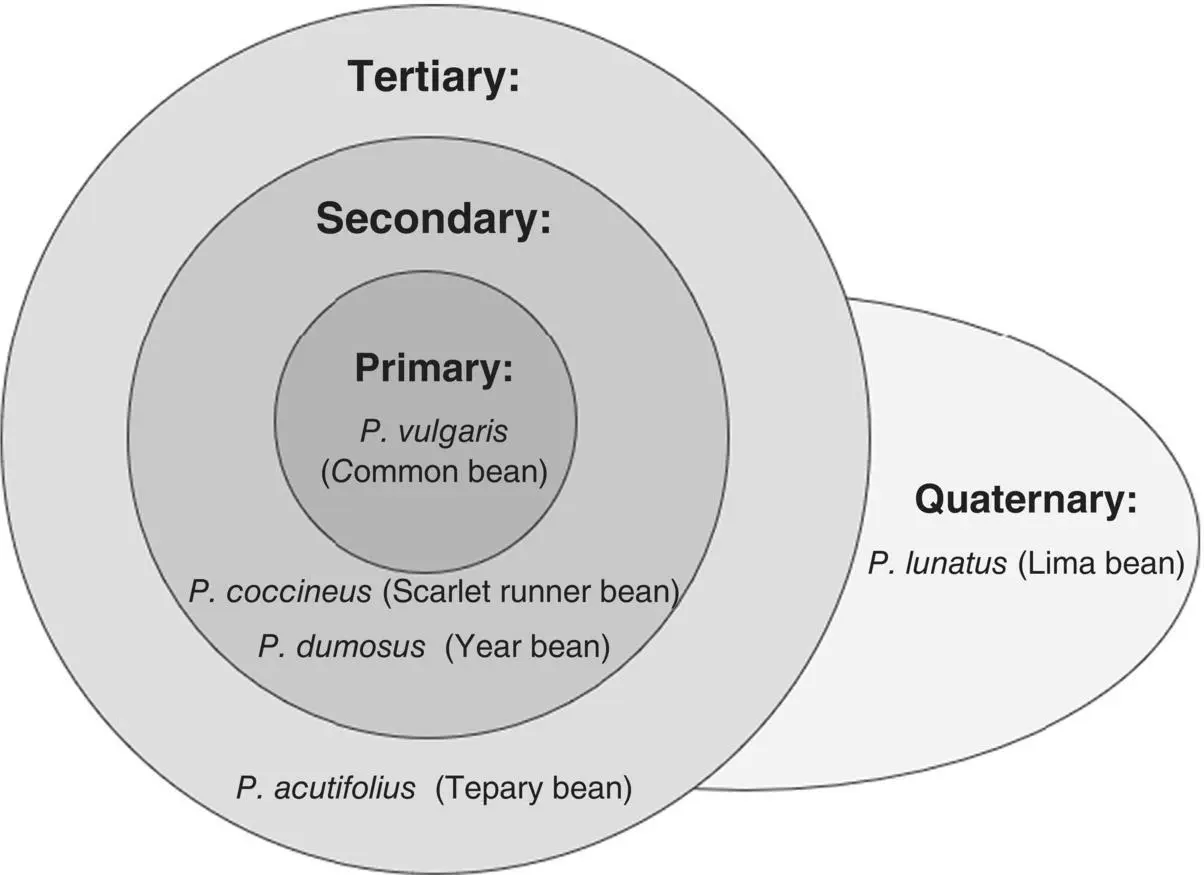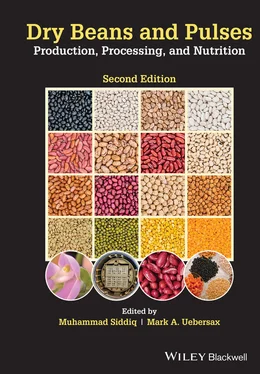
Fig. 2.2. Dry Bean yields (kg/ha) in the US over 110 years since 1909.
Source: Updated from Vandemark et al. (2014) using USDA‐NASS (2020b) data.
Table 2.1. Major bean breeding programs in the US, location and seed type focus prior to 1980.
| Institution |
State |
Seed types |
Breeders |
| Cornell |
NY |
Light red kidney, black |
D. Wallace |
| MSU |
MI |
Navy, dark, light red kidney |
M.W. Adams |
| UNL |
NE |
Great northern |
D.P. Coyne |
| CSU |
CO |
Pinto |
D. Woods |
| UI |
ID |
Pinto, pink |
J. Kolar, M. LeBaron |
| USDA‐ARS |
WA |
Small red, pink |
D. Burke |
| UCD |
CA |
Kidney, pink, cranberry |
C. Tucker |
BEAN GENETICS
Bean species
The genus Phaseolus is New World in origin in contrast to Old World Vigna species, which includes related grain legumes such as cowpea, adzuki, and mung beans. Bean breeders are limited in their improvement efforts to working within the genus Phaseolus due to speciation barriers that prevent successful hybridization. Phaseolus includes five cultivated species separated into four gene pools ( Figure 2.3 ) and over 70 wild species (Freytag and Debouck 2002). Within the five species of cultivated Phaseolus , common bean is the most widely adapted and economically important member compared to other species that include lima and tepary beans. Breeders have successfully transferred traits from the scarlet runner bean ( P. coccineus ) and P. costaricensis in the secondary gene pool (Schwartz and Singh 2013) and from members of tepary bean ( P. acutifolius ) in the tertiary gene pool (Singh and Miklas 2015; Kusolwa et al. 2016), but no successful introgression with lima bean ( P. lunatus ) in the quaternary gene pool has occurred.

Fig. 2.3. Genus Phaseolus includes five cultivated species that reside in four separate gene pools based on genetic distance. There is no restriction to intercrossing between members of the primary gene pool; crossing between primary and secondary gene pool requires that P. vulgaris is used as the pollen parent; crossing between primary and tertiary gene pool requires special techniques to rescue hybrid embryo; crossing is not possible between the primary and quaternary gene pools. In addition to the five cultivated species, there are over 50 wild Phaseolus species (Freytag and Debouck 2002).
Figure adapted from Gepts (2000).
Common bean originated from central Mexico (Bitocchi et al. 2012). From that region, wild P. vulgaris moved north and south and can be found today from northern Argentina to Chihuahua in northern Mexico (Ariani et al. 2018). There were more domestication events in the Mesoamerican than Andean gene region, which may explain the narrower genetic variation within the Andean gene pool observed in many genetic studies. The two gene pools of common beans have been clearly defined based on morphological, biochemical, and molecular characterization (Gepts 1988). One of the most noticeable differences is the larger seed sizes found in Andean gene pool in contrast to members of the Middle American gene pool. Interestingly, similar seed size differences are observed between the Andean (large‐seeded) and Middle American (smaller‐seeded) gene pools for lima bean. A further classification of gene pools of common bean into six races based on agronomic and adaptive characteristics was proposed by Singh et al. (1991). A fourth race, named Guatemala, was added as the climbing beans from Chiapas, Mexico, are unique from the three other MA races (Beebe et al. 2000). Beans also differ in plant growth habit, ranging from determinate types to climbing pole beans that require support.
Singh (1982) classified beans into four types that differ in growth habit ( Table 2.2 ). The typical type‐I determinate bush bean does not produce a vine and vegetative growth ceases at flowering. Most large‐seeded kidney and green beans are determinate. The other three types have an indeterminate growth habit and differ in vine extension. Type‐II is an upright short vine habit similar to soybean that is best suited to direct harvest. Type III is a decumbent long vine habit best suited to semiarid production areas where harvest loss due to wet weather is rare. Type‐IV is the climbing bean that is not grown commercially in the US other than as pole beans in gardens, but is widely grown in many parts of Latin America or East Africa, where they are supported on either trellises, or poles or grown in association with corn.
Table 2.2. Gene pools, races, and growth habits of US dry bean market classes.
| Gene pool |
Race |
Growth habit |
US market class |
| Andean: |
Nueva Granada |
Determinate Type I |
Kidney |
| Bush cranberry |
| Chile |
Indeterminate Type III |
Vine cranberry |
| Peru |
Determinate Type I |
Yellow, Mayacoba |
| Middle American: |
Mesoamerican |
Indeterminate Type II |
Black |
| Indeterminate Type II & Determinate Type I |
Navy |
| Durango |
Indeterminate Type II & III |
Pinto |
| Great northern |
| Jalisco |
Indeterminate Type II & III |
Small red |
| Pink |
| Guatemala |
Climbers Type IV |
Red and blacks – Mexico, Central American only |
Bean germplasm collections include contemporary and heirloom varieties, landraces, exotic plant introductions from foreign countries, and wild accessions of P. vulgaris (Acosta et al. 2007). These collections provide the greatest genetic potential for future improvements essential in breeding programs. Germplasm collections are maintained by the Plant Germplasm System in the US (17,653 Phaseolus accessions) and in germplasm banks at CIAT (37,938 accessions) and in countries where beans originated, were domesticated, and are grown.
To enhance beans, breeders need free access to a wide array of bean germplasm, but with the current climate of protectionism and intellectual property (IP) rights, that free exchange of germplasm has been severely curtailed in recent years. Not only have IP rights restricted free and liberal exchange of bean germplasm but the same rules contributed to a recent example of plant piracy. The system of plant patents and plant variety protection in the US was used effectively to protect a yellow bean variety from Mexico. The yellow bean variety “Enola” was successfully protected by both plant (no. 5894079) and plant variety protection (no. 9700027) patents. Using DNA analysis, Pallottini et al. (2004) proved that Enola was identical to the Azufrado Peruano 87 variety developed and released in Mexico in 1987. The AP87 variety had simply been transported to the US and was claimed to be unique because yellow beans were a new market class in the US. The patent was successfully challenged in court by CIAT for the Commission of Genetic Resources for the Food and Agriculture Organization (FAO) as a clear example of plant piracy. Before being refuted, the plant patent had the potential to jeopardize the entire system of free exchange of bean germplasm and its use in future breeding efforts to improve bean varieties for the public good. This issue opened a new discussion on the ownership of plant germplasm and the role of IP rights in controlling its use (Gepts 2004).
Читать дальше














